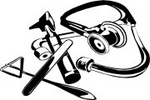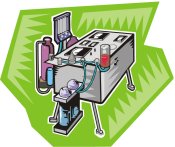
Worksheets and No Prep Teaching Resources
Reading Comprehension Worksheets
Medical Tools

Medical Tools
 Worksheets and No Prep Teaching Resources Reading Comprehension Worksheets Medical Tools |
 Medical Tools |
| edHelper's suggested reading level: | grades 4 to 6 | |
| Flesch-Kincaid grade level: | 8.6 |
|
Dialysis
By Jennifer Kenny |

|
 1 Do you know what function your kidneys have? They clean waste from your blood. They also regulate hormones. The human body has two kidneys that are shaped like beans and are about the size of fists. They can be found below your ribs, toward your back. Acting as filters, your kidneys mix the waste with water to create urine. The urine is stored in your bladder until you empty it.
1 Do you know what function your kidneys have? They clean waste from your blood. They also regulate hormones. The human body has two kidneys that are shaped like beans and are about the size of fists. They can be found below your ribs, toward your back. Acting as filters, your kidneys mix the waste with water to create urine. The urine is stored in your bladder until you empty it. |
Create Weekly Reading Books
Prepare for an entire week at once! |
| Leave your feedback on Dialysis (use this link if you found an error in the story) |
 |
Medical Tools
|